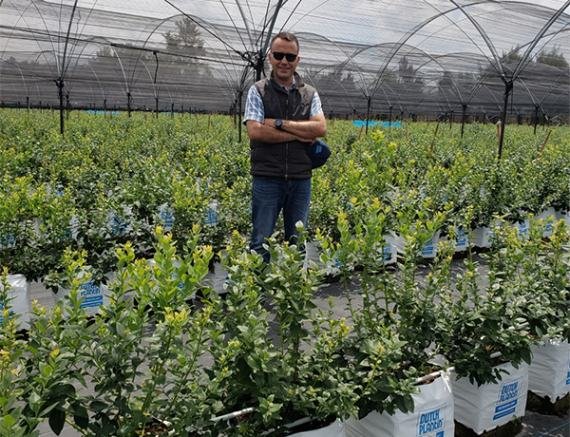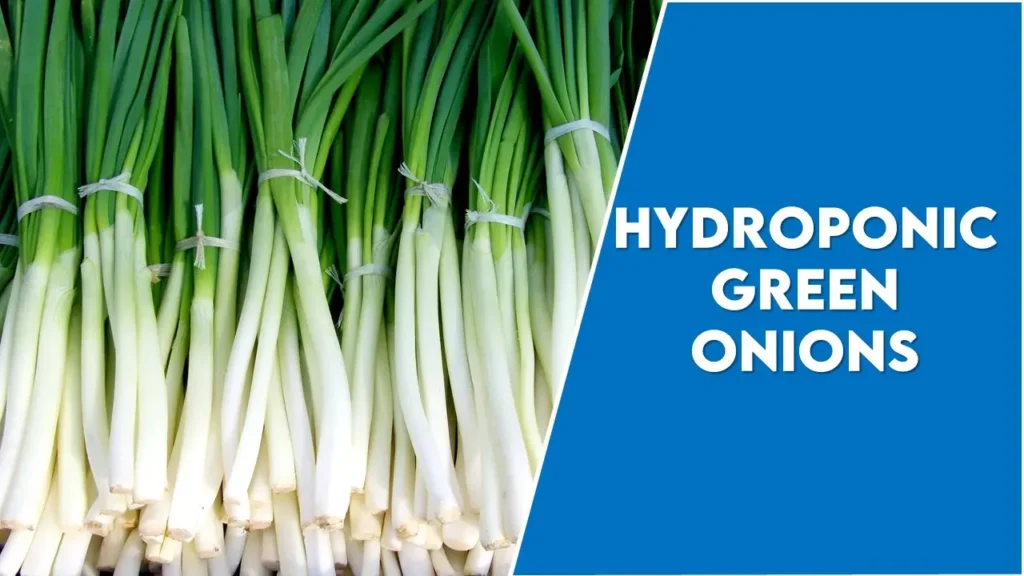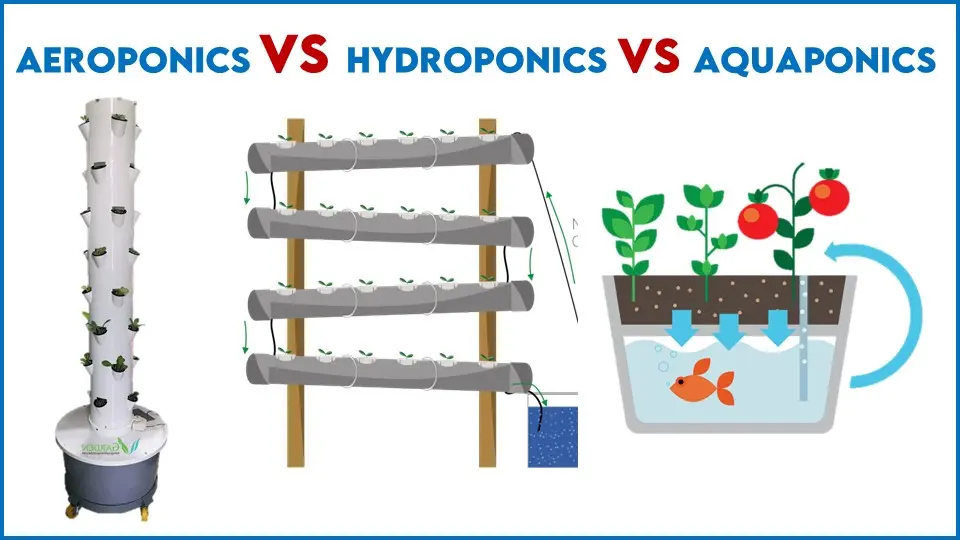How to grow Hydroponic Blueberries: An Attractive Way to Raise Bluegold
Blueberries are perennial flowering plants that produce blue or purple berries and are sweet to palette. They all are native to North America whether it is commercial (both wild: lowbush and cultivated: highbush). They can vary in size to as low as 10 cm or as high as 4 meters in height. They are classified under vaccinium genus which also includes cranberries, huckleberries, and bilberries They are rich in bioactive anthocyanins that help to control obesity and diabetes and are called “ superfruit”. To its cultivation, berries grow in tall bushes that are planted in a series of long rows. For this process, growers have to wait for at least 3-4 years until the bush gets mature and ready to harvest.
So, there arises a question of how to cut short this time duration. So, Is there any other replacement? The answer to this question is hydroponic blueberries which are the greatest assets for blueberry farmers. In this article, you will get to know about how one can raise hydroponic blueberries.
Health Benefits of Hydroponic Blueberries

There are numerous advantages that one can gain after having blueberry fruits some of which include prevention of heart disease and cancer, increased bone strength, and help to maintain blood pressure. Other fast checks of blueberries through which it benefits the body are:
- The presence of anthocyanin compound in it is responsible for blue color and many health benefits including antioxidant effect.
- Often intake of one cup of blueberry fulfills 24% recommended dose of vitamin C for a person.
- Consuming blueberries decreases the rate of heart attack due to the presence of fiber, potassium, folate, vitamin B6, and vitamin C (which supports heart health).
- It reduces obesity, and overall mortality, increases hair and skin health, etc.
Nutrition:
Consumption of one cup of blueberries contains :
| Calories | 84 |
| Cholesterol | 0 g |
| Protein | 1.1 g |
| Fats | 0.49 g |
| Carbohydrates | 21.45 g |
| Dietary fiber | 3.6 g |
| Total sugars | 14.64 g |
| VItamin C | 24 % |
| Vitamin K | 36 % |
| Vitamin B6 | 5 % |
Cultivating Hydroponic Blueberries:

Due to the increased demand for blueberries, the cultivation techniques and area under it have increased too. Out of all the berries, blueberries are considered to be ideal for greenhouse cultivation but one can opt hydroponic system for raising blueberries also. This is followed by selecting a good variety while maintaining other factors like spacing, temperature, pollination, water and nutrient requirement, etc. With greater control of these factors, one can yield a healthy crop of hydroponic blueberries in less time.
Suitable Systems for Raising Hydroponic Blueberries:
Concerning hydroponic cultivation, the selection of a system plays a critical role because it only will significantly impact the success of the cultivation. Since berries require specific values for root aeration, moisture level, and pH, so the selected system should provide these conditions properly. Some of the systems that can prove to be effective for hydroponic blueberries are listed below:
- Nutrient Film Technique (NFT)
In this system, a thin film of nutrient solution flows over the plant’s roots that are placed over the channels. Careful attention to root health and moisture levels are prerequisites to obtaining a good yield of hydroponic blueberries. The nutrient solution schedule should be more frequent so that the plants receive enough moisture and nutrients. The pH and nutrient level maintenance is pivotal in NFT.
- Deep Water Culture (DWC)
This system is suitable if the grower wants to grow dwarf or compact hydroponic blueberries. In this technique, the plants are immersed in nutrient-rich solutions with their roots dipped in hydroponic solutions along with the oxygen passage that comes through air stones or diffusers. It accelerates good aeration of roots and consonant nutrient delivery.
- Drip System
This system is adjusted according to the specific needs of hydroponic blueberries. In this system, plants are grown in containers or bags that are infused with suitable growing medium along with a drip irrigation system that provides an accurate range of nutrient solutions to the growing roots. It better regulates pH and nutrient levels.
- Hybrid System
It is the combination of different hydroponic systems that are more suitable according to the specific needs of hydroponic blueberries. For instance, a combination of deep water culture techniques and ebb and flow method can be used together with additional aeration to enhance root growth.
Suitable Varieties of Hydroponic Blueberries-

It is essential to choose the most suitable varieties of blueberries along with the desired characteristics and adaptability to controlled environmental conditions. For hydroponic systems, compact or dwarf blueberry cultivars are more acceptable because they tend to work better in limited spaces. Some of the top hydroponic blueberry varieties include
| Top Hat | A compact, low-growing blueberry type, most suitable for little areas. It has attractive leaf styles and produces abundant fruits. |
| Sweetheart Blueberry | This variety is excellent to grow in hydroponics. It gives rise to small, sweet berries that has much ornamental value. |
| Sunshine Blue | It is a type of semi-dwarf blueberry and can grow in a container or hydroponic system. It has pink and blue foliage and produces sweet and tangy berries. |
| Pink Lemonade Blueberry | This variety has a uniqueness in producing pink berries. |
| Bushel and Berry Perpetua Blueberry | It makes 2 harvests in a year i.e. first harvest in early summer and second in early fall. It is known for producing fruits in abundance with so little footprint. |
Pre-requisites for Raising Hydroponic Blueberries-
The following points should be considered by the grower to produce good quality hydroponic blueberries-
- Prime Hydroponic Medium –
A mixture of peat moss, perlite, and pine bark is considered the best medium for hydroponic blueberries as it helps in maintaining acidity of the soil, assures good drainage and enough aeration in the root zone, respectively. Healthy root growth and nutrient absorption are the basic advantages that are provided by the growth medium.
- Ideal Nutrient Solution-
The essential nutrients should be present in the nutrient solution that helps in the survival of hydroponic blueberries. The nutrient solution should contain the necessary nutrients with the right pH levels which should be slightly acidic in the range between 4.5 to 5.5. An ideal nutrient solution should contain the following given nutrients-
Macronutrients-
- Nitrogen –
It is essential for good vegetative growth and should be in the ratio of 3:1 of Nitrate: Ammonium (recommended).
- Phosphorus-
It is to promote root development and flowering and the recommended ratio of 1:2 (P: K) is ideal.
- Potassium-
It provides disease resistance, and promotes fruit development, and overall plant health.
- Calcium –
It should be present in moderate amounts and helps to prevent disorders like blossom end rot (BER) and develop strong cell walls.
- Magnesium –
It supplies magnesium sulfate that enhances chlorophyll production and hence photosynthesis.
- Sulpur-
It promotes amino acid production and protein synthesis. One can dissolve sulphur pills in water if the nutrient solution does not contain enough amount of sulphur in it.
- Light, Temperature, and Humidity Requirements-
Abundant light, specific temperature, and humidity are the basic requirements that hydroponic blueberries need for sustaining. Generally, a minimum of 12-16 hours of direct or high-intensity artificial lights are required by blueberries to perform best. A daytime temperature of 60-70 ℉ and a slightly cooler night-time temperature are suitable for flowering and fruit setting. LED grow lights becoming popular nowadays. To ensure proper transpiration, humidity levels of 50-60% are ideal.
- Pollination Methods-
Generally, pollination in blueberries are done by insects but in case of hydroponic blueberries following methods can be adopted:
- Manual Pollination- done manually by transfer of pollen grains from stamens to the pistil of the flower.
- Introducing Pollinators- for commercial hydroponic system, one can introduce bumblebees or other pollinators to mimic natural pollination.
- Electric Pollination- use of electric pollinators that shake the pollen loose and ensure pollination.
- Training and Pruning-
These techniques are vital in maintaining plant health, and shape, and also enhance the productivity of hydroponic blueberries. Pruning is done, typically in late winter or early spring. It should be done to obtain an open and bushy structure that will ease the light and air penetration. Training keeps the plants in good shape along with good fruit production and maintenance.
- Managing Pests and Diseases-
Often inspections are necessary for proper growth patterns and to prevent the risks of disease and pest infestation. Quarantine of newly inducted blueberries in the hydroponic system helps to prevent the spread of diseases. Moreover, keep the growing area of hydroponic blueberries clean and free from debris.
- Harvesting Hydroponic Blueberries-

Use clean hands to gently pick the berries by gently grasping and rolling them between your thumb and fingers. Avoid pulling the berries to prevent the damage. Remove the undesirable and select only good-quality hydroponic blueberries. Store them in a cool place and refrigerate them to maintain the fresh produce.
Inference:
From the above information, we all get to know the raising of hydroponic blueberries and the important points that should be considered in mind for good and abundant produce. Through hydroponics, healthy and strong blueberries are obtained in less time. Since Hydroponics also increases the density of blueberries which in turn gives higher returns in exchange. In the end, hydroponic farming is the best alternative and the future of smart agriculture.
Join Our Hydroponics Growers Group!
Connect with fellow hydroponics enthusiasts, share your ideas, ask questions, and grow together as a community.
👉 Join WhatsApp Group






